You have a business with customers located across the country — possibly even the world. How do you ensure that your products will be on time in the most productive and cost-efficient way possible — especially in today’s climate in which a supply chain can be strained for a multitude of reasons?
The answer can be boiled down to three words: Supply chain optimization. But what exactly does that mean? Let’s take a look.
Supply chain optimization at a glance
Supply chain optimization can be defined as the means used to enhance and improve a company’s manufacturing systems and overall supply chain through a “digital toolbox” of processes and technology designed to reach the highest cost efficiency while still meeting customer expectations.
These advanced tools to optimize your supply chain network include analytics, algorithms, and other forms of insightful data. You can use specialized software to help maintain a balance between procuring raw materials, manufacturing products, distribution, transportation, and fulfillment on one side of the scale — and the ever-changing swells of supply and demand on the other.
There are three main parts to supply chain optimization: design, planning, and execution. All play a vital role in your supply chain’s success and growth.
How to optimize your supply chain
Here are some ways business owners can help their supply chain run as smoothly as possible:
- Do not be afraid to outsource. Some parts of your supply chain should be handled in-house, but other tasks handed to a third party can save your team time and money. Know what your supply chain does well — and needs to do — in-house and what can be outsourced.
- Gather data… and more data. When it comes to supply chain optimization, it always helps to use as much data as you can. But you need to make sure you have the right kinds of data that will help your business grow and help you gain a deeper understanding of your customers and your market as a whole.
It’s necessary to use analytics programs that will help create a crystal-clear picture of your customer’s shopping behaviors and wants. Such information can help you determine smaller decisions, such as whether to put a certain item on sale, and much larger ones, such as significant business decisions. - Automate when possible. One critical component to supply chain optimization is warehouse management. By using artificial intelligence (AI) to maintain order and robotics within a warehouse, companies can ensure a higher level of accuracy and speed of fulfilling orders and overseeing repetitive tasks through automation — while allowing human workers to tend to more challenging tasks
- Open the lines of communication. As in all things, strong communication lies at the foundation of an optimized supply chain. With so many possible players involved (retailers, suppliers, manufacturers), it’s imperative to eliminate any disconnect that may exist between parties through transparent, and consistent, communication modalities — and the ability to access real-time data at the push of a button. By doing so, you can mitigate the amount of confusion that may arise — while maintaining high levels of fulfillment satisfaction.
- Review and reflect. Once you establish a set of strategies and processes to optimize your company’s supply chain, you still need to hold regular supply chain review meetings to keep track of how these new implementations are going through data sets centered around efficiency rates.
This is also the time to make sure that the optimization measures are also staying within the parameters established by compliance/regulatory restrictions. Furthermore, during these discussions, it is important to assess what new programs and strategies may help operations run smoother — as tools and resources keep evolving to meet the ever-changing business climate and markets.
The benefits
When it comes to supply chain optimization, the benefits are many. Here are just a few:
Reduction of costs. This is a big one. When you find ways to work quicker and more efficiently, you can cut down on a variety of traditional supply chain costs — such as labor and transaction costs. Having more control over your inventory can also significantly lower the amount of overhead stock you have, leading to increased savings and reducing wasteful spending.
More revenue and profits. Simply put, small changes can lead to big numbers. These are often talked about on the savings front (see above), but they can also appear in a company’s revenue and profits through an uptick in customer retention and satisfaction by meeting their needs more quickly and accurately.
Better supplier performance. By sharing real-time data with suppliers, you create a needed level of visibility to quickly assess which suppliers are performing their roles correctly through on-time orders and which ones are missing targets. This information also allows you to easily see any possible congestion areas that may have formed along the supply chain — and make any needed changes to resolve the situation and make any large-scale business decision later down the road. Working with reliable suppliers can lead to an improvement of a company’s cash flow.
Lower amount of risk. Risk is an inherent enemy of a supply chain, but by using real-time data to analyze every part of the chain, you are able to implement your “Plan B” whenever you are confronted with unforeseen circumstances. These supply chain optimization tools allow you to be proactive in terms of planning for the worst; instead of reactive when the worst shows up at your front door. When you gain a better understanding of the risks found within your supply chain, you can find measures to achieve efficient operations.
The next step
Now that you have a better idea for supply chain optimization, it’s time to think about investing in the future of your company’s own supply chain.
You can start this process by talking with a Nexterus representative to determine how our full suite of services can help streamline your supply chain needs while creating higher fulfillment rates, lower operating costs, enhanced inventory management, strengthened supplier relations, and create more satisfied customers.
Do you have questions about your supply chain that keep you up at night? Learn more about how you can partner with the supply chain experts at Nexterus to address your supply chain challenges and keep your company on the road to success. Let’s talk today!



